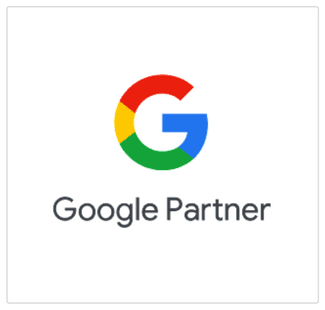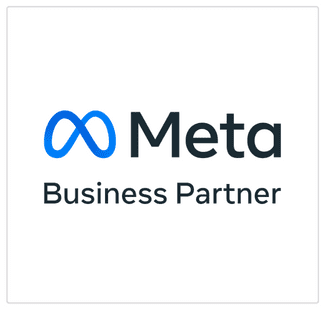In an article previously we discussed what it means website URL to help you understand the components and limitations of these addresses.
In this article, you will understand what a link is, what is considered a link, and what are the 7 types of hyperlinks used, from an SEO point of view.
What is the definition of a link? What is a Link?
Link definition: the term “LINK” comes from the English term “Hyperlink“. A hyperlink is a reference to a document or part of a document.
In the online environment, the idea of a link is usually associated with web pages. However, this notion is much more general and can include linking between other types of electronic documents, which are not necessarily in HTML format (web pages) and are not necessarily necessarily located on the Internet.
The link is a very important tag in HTML, because it gives the user and search engines the possibility to navigate from one page to another.
Need professional SEO services for your business?
This type of link used on websites is defined with <a> and </a> tags, with the following attributes:
– href – the address of the final file.
– target – the window in which the file will open final.
– title – a small description associated with the link.
The place where a user will be sent after clicking on a link, is represented by the “href” attribute (Hypertext REFerence).
7 types of hyperlinks:
From an SEO point of view, these links made between sites can be of 7 types:
- internal – link used to send a user to specific places on a specific page (Jump-to-Section).
- local – link used to send a user to other pages on the same site.
- global – link used to send a user to other web domains.
- dofollow – link that transfers SEO authority.
- nofollow – link that tells Google not to provide SEO relevance.
- sponsored – link used for paid or sponsored links.
- ugc – link used for user generated content.
The first 3 types of links (internal, local and global) are of the form:
- Internal: href=”#anchorname”
- Local: href=”./img/photo.jpg”
- Global:href=”https://wikipedia.com/”
Internal links are used to direct users of a web page to a specific section of that page.
The main advantage of these is that that they offer a viable and very fast solution for navigating within a long web page in terms of existing content.
Local links are links that represent certain resources in a web page (e.g. an image) or links that send the user of a web page to another existing page on that site for additional information.
Global links or external links, also known as backlinks, from an SEO perspective, help users reach relevant pages that are on other sites.
Dofollow links are known in SEO industry because they give authority to sites when they are submitted from other sites.
These transfer authority from an SEO perspective and contribute to a site’s results in the organic results of search engines (SERPs).
A dofollow link has the following HTML format:

The other 3 types of links (nofollow, sponsored, ugc) are highlighted by implementing the rel=”…” tag, replacing the three dots with the type of link you want to make, namely: nofollow, sponsored, ugc.
The format of these in HTML is as follows:

It’s also important to point out that the last 2 types (sponsored and ugc) were recently introduced by Google into the SEO ecosystem.
Read also: SEO Advertorials: help publish paid articles for SEO?
How do links appear in web pages?
Visually, a link is text (usually underlined and/or represented in a different colour), which makes it easy to identifiable in a web page.
From an HTML point of view, a link is represented under form:
<a title=”Title, appears as info when mouseover over the link” href=”URL” target=”where the new page will open” class=”class=”classStyleLink”>text link</a>
What is the method of operation of a link?
If there is a link on a page, regardless of the type of type of link, when a person clicks on that link, the browser used accesses that page which is available at the specified address.
These links are still an important element in the vast amount of information (sites and content) published on the Internet.
Which is why, recently, Google has shaken up the industry a bit SEO industry by announcing massive changes to the way websites would should mark nofollow links.
While beneficial, (these changes help Google to better understand the links on the Internet) a number of questions have arisen among SEO specialists.
More than 14 years after the introduction of the “nofollow” attribute, Google has announced significant changes to the way it treats links with this type of attribute.
The most important SEO issues:
1. Link attribution can be done in 4 ways ways: nofollow, sponsored and ugc, each with a different meaning, and dofollow (default link) – where it is not necessary to implement a rel=”dofollow” tag is not required.
2. For the purposes of ranking sites in the SERP (pages of search engine results pages), Google will treat the attribute “nofollow” attribute as a “hint”, which means that, normally, they will will have no impact on the ranking of sites in the SERP, but Google can choose to ignore this attribute (this directive) and use nofollow links for ranking.
3. Google continues ignore nofollow links for crawling and indexing purposes, but this behaviour will change from 1 March 2020, when Google will start to treat nofollow attributes as hints, which means that they would be they may be used for crawling and indexing.
4. Paid links should still use nofollow or sponsored attributes.
Hello! Using the attribute “ugc (User Generated Content)” attribute for paid links may result in a penalty from the SEO point of view.
5. For publishers who, until today, used the “nofollow” attribute to control crawling, there is a possibility that they will have to to rethink their strategy.
What is the impact of these changes, in terms of
The folks at Moz have put together the following chart to help you better understand how things will change over the next 6 – 7 months:

The appearance of the 2 new attributes (sponsored and ugc) generated the biggest confusion, because Google will still penalize paid links that are not properly marked with the attributes: “sponsored”, “nofollow”, “nofollow sponsored”.
Google does not recommend marking paid links or sponsored links via the “ugc” attribute.
But before we go into more detail, let’s explain what UGC means.
UGC – user generated content, is a type of link used to mark user-generated content on a website, such as: comments, forum posts, guest post articles, etc.
This type of link creates confusion, however.
What happens if contributors to a site with UGC type content add various paid links or paid links to the published content. affiliate marketing links? What happens if the links in the comments section of the change their attribute from nofollow to ugc?
So far, Google has not provided a clear explanation on these issues.
Which is why, many sites will continue to mark UGC content with the nofollow attribute or possibly a combination such as “nofollow ugc”.
We can use the nofollow attribute to control crawling and indexing?
From an SEO point of view, using the nofollow attribute attribute to prevent Google from indexing a site’s content is an one of the worst methods and will continue to remain so, for now.
If you want to prevent Google from indexing certain pieces of content from your site, the official recommendation is to use the robots.txt file or the noindex tag.
However, the crawling part is a slightly different story, because part of an SEO specialist’s job is to improve the budget crawl budget of a site and prevent Google from crawling for pages that aren’t important to a site.
Given the initial confusion and the fact that certain benefits or drawbacks have not been clearly highlighted, there is a possibility that most sites will not implement any changes, at least until there is clearer information.
Therefore, it remains to be seen how these attributes and what the long-term impact of nofollow links will be, sponsored and ugc links in terms of SERP results.
So, online we are dealing with 7 types of links:
- internal – links to a specific place in a specific page in the site (Jump-to-Section)
- local – send to other pages in the same site
- global – send to other web domains
- dofollow – transfer authority from SEO point of view
- nofollow – tells Google not to provide SEO relevance
- sponsored – used for paid links or sponsored links
- ugc – used for content generated by User generated content
Each of these types of links has distinct features, advantages, and distinct disadvantages. It all depends on how you understand what the role of each link is and what is the right context in which, by placing a link (or several links), you can gain benefits.
I hope you understand what a link is and what the 7 types of hyperlinks are, but especially what the role of each one is.







